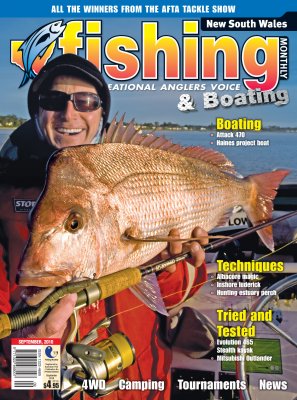The search for perch by Dan Selby
 Estuary perch (EPs) have a large following of anglers from the Richmond River down as far south as the mouth of the Murray. With such a wide distribution, their habitat can vary considerably and so can the techniques for capturing these enigmatic sport fish.
Estuary perch (EPs) have a large following of anglers from the Richmond River down as far south as the mouth of the Murray. With such a wide distribution, their habitat can vary considerably and so can the techniques for capturing these enigmatic sport fish.
With the NSW closed season ending on August 31, anglers will be looking forward to targeting perch again and for the most part these days, EPs provide a great catch-and-release sport fishery. T
Throughout this article we will look at the areas to target, tackle and techniques to use and the best methods of handling these little battlers.
EPs are largely schooling fish and especially in the cooler months, can be found in large numbers in the lower brackish reaches of the estuaries.
Most of these schools comprise a plethora of smaller fish from 10cm to 35cm that are very ravenous when in a feeding mode. Within these schools there can generally be a couple of big fish in the 40cm range.
These fish don't get big from being stupid and will bite only the most well-presented lure or bait. As with their cousins, the bass, the benchmark for a quality EP is 40cm with fish over 50cm exceptional captures in most of their NSW habitat.
In other situations, schools of EPs of a consistently similar size can be encountered. These equal-sized fish are usually 40cm-plus and can make for some exceptional angling. A good fish will make fast, punching runs for the bottom and occasionally head straight to the surface for a small leap to try to throw the lure lodged in its mouth.
The places where EPs can be caught are endless and never cease to amaze me. From 30cm of water on the flats to 10m-plus along the rock walls and rock bars, anglers should always keep an open mind as to where the fish will be on any day.
Like most fish, EPs like to remain mostly out of the main strength of the tidal water they frequent; choosing to lie up in eddies created by structure. This structure can be in the form of bridges, weed beds, fallen timber, reefs, drop-offs, jetties, boat hulls, rock walls and oyster racks.
All these places offer EPs the conditions to remain safe and feed on what bait is present without expending large amounts of energy swimming against the tide for long periods.
PLASTICS RULE
Soft plastics are tops when it comes to tempting a school of EPs.
Plastics can be rigged weightless and skipped across the surface like a fleeing prawn, a common tactic on the South Coast in the snags and oyster racks where getting the fish up to strike on the surface will aid the angler in extracting the fish once hooked.